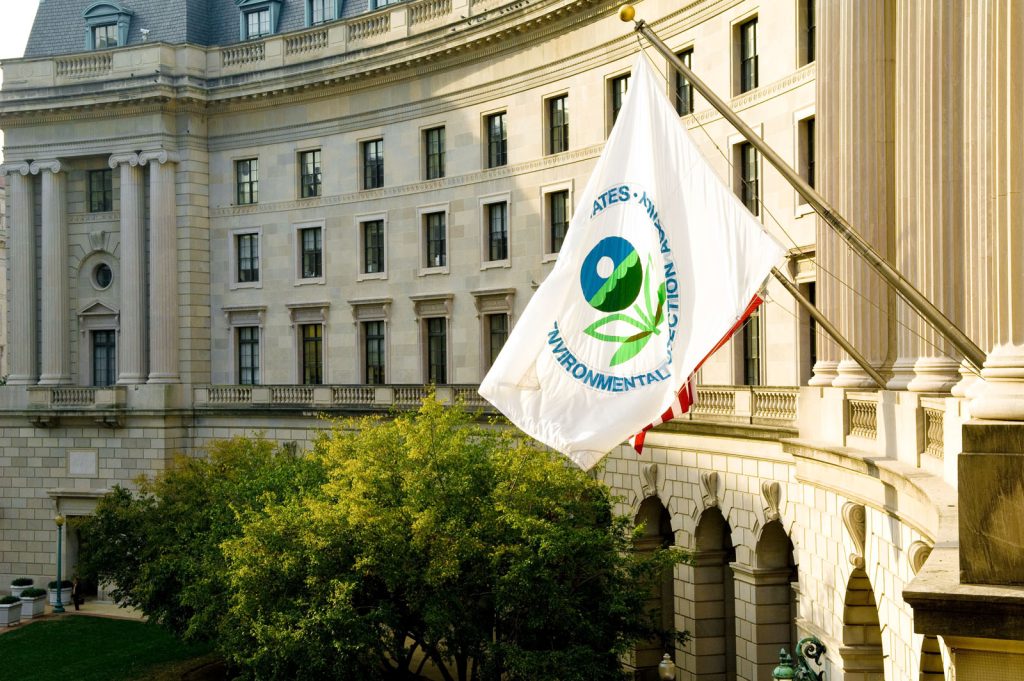The U.S. Environmental Protection Agency (EPA) will award up to USD $3 million to establish regional hubs for stormwater management research, technical expertise, and information sharing. This funding will support the designation of up to five institutions of higher education, think tanks, or nonprofit organizations as Centers of Excellence for Stormwater Infrastructure Technologies (CESITs), tasked with developing or improving best practices for stormwater management and spreading these practices sectorwide.
Seth Brown, Executive Director of the National Municipal Stormwater Alliance (NMSA; Springfield, Virginia), describes moving forward with CESITs as a product of more than a decade of legislative action and water-sector advocacy. NMSA and the Water Environment Federation (Alexandria, Virginia) repeatedly have called for the establishment of CESITs in their annual Recommendations to Improve the Stormwater Sector in the U.S. document.
“The concept of CESITs has been part of legislation in every Congress since Donna Edwards (D–Maryland) included it in a bill in 2011 in the 112th Congress. So, to see these finally becoming a reality is a long time coming and something that is way overdue in our sector,” Brown said. “These centers have the potential to catalyze innovation in stormwater for not only treatment technologies and practices, but for funding and financing as well as programmatic effectiveness.”
Investing in Integration
Stormwater management technologies — as well as strategies to build, operate, and maintain them — are emerging at a rate with which many communities struggle to keep pace. The sector not only lacks sufficient data to make confident choices about which stormwater management tactics to pursue, but also faces uncertainty about the best ways to fund their construction and upkeep. Furthermore, the site- and climate-specific nature of some stormwater management measures sometimes means communities have few avenues through which to seek useful technical assistance.
CESITs, according to EPA guidelines, will address each of these challenges within their respective regions by conducting research on both stormwater control measures as well as alternative funding strategies, fielding technical questions from governments, and spreading the word about new advancements in the sector.

“The stormwater sector is extremely data-poor, especially regarding the performance of new and emerging technologies,” Brown said. “These centers have the potential to bridge the gap between research and application in our sector through support of technology-focused initiatives.”
The specific research areas that CESITs will investigate include exploring new forms of green infrastructure, identifying cost-saving approaches to project delivery and maintenance, studying opportunities to use sensors and other technology to improve infrastructure function, and integrating real-time weather forecasts into infrastructure operations. Beyond research, their activities might include conducting workshops and training sessions for stormwater professionals, developing fact sheets and outreach materials, presenting at conferences and other knowledge-sharing events, and working directly with communities on specific stormwater challenges. These CESITs will meet on a quarterly basis to coordinate their activities and avoid duplication of efforts, according to EPA.
Funding for CESITs was stipulated in the USD $1.2 trillion Infrastructure Investment and Jobs Act, signed into law in 2021. U.S. Congress appropriated CESIT funding for fiscal year 2023, which enabled EPA to begin its selection process this January.
EPA’s initial USD $3 million investment will support the designation of between three and five CESITs, each of which will receive between $588,000 and $980,000 to kick-start their activities. The grant also funds the development of a public-facing, electronic clearinghouse that will provide centralized access to outcomes from the CESITs’ work — similar to other EPA clearinghouses that focus on wastewater technology and financing strategies for environmental projects — which will feature research, best practices, and outreach materials. Beyond this initial funding, Congressional appropriations also provision an additional $3 million for each of the next 4 years, amounting to $15 million in total.
Elevating Proven Expertise
Attempting to attract a set of CESITs that represent a diverse range of geographical contexts, EPA is limiting its request for applications only to “regional” organizations that perform work in at least two U.S. states.
The agency is looking specifically for organizations with a proven track record of advancing stormwater research and outreach in ways that apply directly to their geographic region. It also encourages applications from organizations with robust plans to extend stormwater knowledge to communities of various sizes, from large cities to rural areas, as well as those with experience in working with vulnerable and low-income communities that historically have faced chronic flooding challenges.
Applicants can apply to become a CESIT, develop and maintain the CESIT clearinghouse, or do both. A panel of EPA staff will review applications and make selections based on a weighted, 100-point scale. Criteria include, for example, the applicant’s past contributions to the stormwater sector, their approach to research and intersectoral cooperation, how they intend to share their results, and how they plan to budget their grants, if awarded.
Organizations interested in becoming CESITs should apply via the U.S. government’s grants portal by March 18. EPA plans to announce selections by this fall and will host a webinar introducing the new CESITs to the broader stormwater sector.
Top image courtesy of Chokniti Khongchum/Pixabay

ABOUT THE AUTHOR
Justin Jacques is editor of Stormwater Report and a staff member of the Water Environment Federation (WEF). In addition to writing for WEF’s online publications, he also contributes to Water Environment & Technology magazine. Contact him at jjacques@wef.org.





